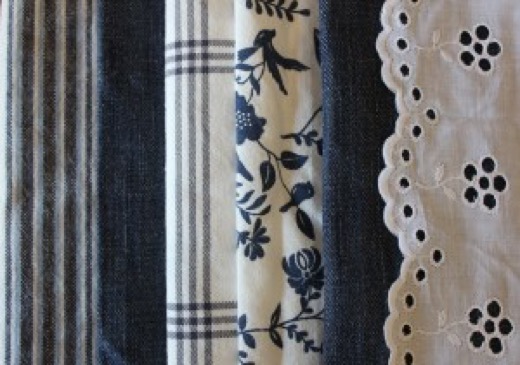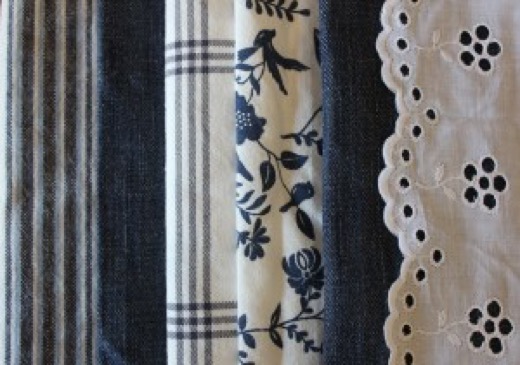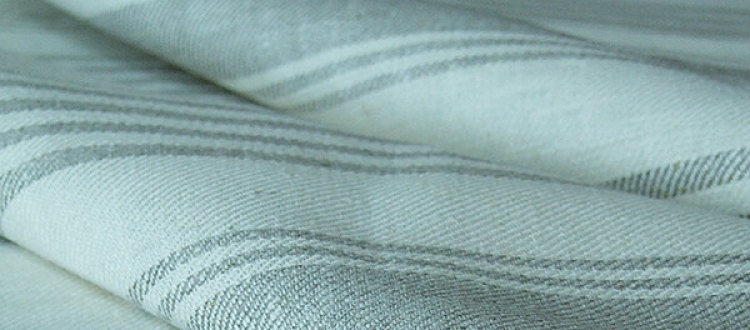

The fabric is an essential component in the world of textiles and fashion. It plays a crucial role in determining the quality, comfort, and durability of garments and other textile products. Understanding different types of fabric and their characteristics is important for making informed choices when it comes to purchasing or creating clothing and other textile items.
Fabric refers to the materials formed by weaving, knitting, or felting fibers together. It is used for making various products like clothing, upholstery, curtains, and more. Fabric matters because it directly affects the comfort and functionality of the finished product. The choice of fabric can impact factors such as breathability, durability, ease of care, and overall aesthetics.
Here are some common types of fabric and their characteristics:
• Cotton: Known for its softness, breathability, and durability. It is a versatile fabric that is widely used for making a variety of garments.
• Silk: A luxurious and delicate fabric known for its natural sheen and smooth texture. It is often used for making formal wear and luxurious home furnishings.
• Polyester: A synthetic fabric that is lightweight, durable, and resistant to wrinkles and shrinking. Polyester is commonly used in clothing and upholstery.
• Wool: A natural fiber known for its warmth and insulation properties. It is commonly used for making winter wear and blankets.
• Linen: A lightweight and breathable fabric that is highly absorbent and ideal for warm weather. It is often used for making summer clothing and home textiles.
• Denim: A sturdy and durable fabric made from cotton, commonly used for making jeans and jackets.
Each type of fabric has its own unique characteristics that make it suitable for different purposes. Understanding these characteristics can help in making the right choices when it comes to selecting fabric for specific applications or projects. So, next time you are shopping for clothing or planning a sewing project, consider the fabric choices carefully to ensure the desired outcome.

Cotton is a popular natural fabric known for its softness, breathability, and durability. It is made from the fibers of the cotton plant and is widely used in the textile industry. Here are some key properties and uses of cotton fabric:
• Soft and comfortable: Cotton fabric has a soft and smooth texture, making it comfortable to wear on the skin.
• Breathable: It allows air to circulate, keeping the body cool and preventing overheating.
• Absorbent: Cotton can absorb moisture, helping to keep the body dry and comfortable.
• Durable: It is a strong fabric that can withstand regular use and washing without losing its quality.
• Versatile: Cotton fabric is versatile and can be used in a wide range of products, including clothing, beddings, curtains, and towels.
Silk is a luxurious natural fabric known for its natural sheen and smooth texture. It is made from the fibers produced by silkworms, specifically the cocoons of the silkworm larvae. Here are some key properties and uses of silk fabric:
• Luxurious and elegant: Silk fabric is highly prized for its luxurious appearance and elegant drape.
• Smooth and soft: It has a smooth and soft texture, providing a comfortable feel against the skin.
• Lightweight and breathable: Silk fabric is lightweight and breathable, making it ideal for garments worn in warm weather.
• Hypoallergenic: Silk is naturally hypoallergenic, making it a good choice for those with sensitive skin.
• Versatile: Silk fabric is versatile and can be used in a variety of products, including clothing, accessories, and home furnishings.
In conclusion, natural fabrics like cotton and silk have their own unique characteristics that make them suitable for different purposes. Understanding these properties can help in making informed choices when it comes to selecting fabric for clothing and other textile items.
Polyester is a synthetic fabric that is known for its durability and wrinkle-resistant properties. It is made from a type of plastic called polyethylene terephthalate (PET) and is commonly used in the textile industry. Here are some key properties and uses of polyester fabric:- Durable: Polyester fabric is highly durable and can withstand regular wear and tear without losing its quality.- Wrinkle-resistant: It has a natural resistance to wrinkles, making it a popular choice for clothing items that require minimal ironing.- Fade-resistant: Polyester fabric is resistant to fading, making it suitable for items that are exposed to sunlight.- Quick-drying: It has excellent moisture-wicking properties, allowing it to dry quickly when exposed to water.- Versatile: Polyester fabric can be used in a wide range of products, including clothing, upholstery, and outdoor gear.
Nylon is a synthetic fabric known for its strength and water-resistant properties. It is made from a type of plastic called polyamide and is widely used in various industries, including fashion and sports. Here are some key properties and uses of nylon fabric:- Strength: Nylon fabric is incredibly strong and can withstand heavy use and pressure.- Water-resistant: It has excellent water-resistant properties, making it ideal for outdoor and sports apparel.- Lightweight: Nylon fabric is lightweight, making it comfortable to wear for extended periods.- Easy to care for: It is easy to care for and can be machine washed and dried.- Versatile: Nylon fabric is versatile and can be used in a variety of products, including clothing, bags, tents, and umbrellas.
In conclusion, synthetic fabrics like polyester and nylon offer unique properties that make them suitable for different applications. Understanding these characteristics can help in making informed choices when it comes to selecting fabric for various purposes.
Poly-cotton blend fabric is a combination of polyester and cotton fibers. This blend offers the advantages of both materials, resulting in a fabric that is versatile and widely used. Here are some key properties and uses of poly-cotton blend fabric:
• Comfortable: The cotton component of the blend provides breathability and softness, making it comfortable to wear.
• Durable: The polyester component adds durability and strength to the fabric, ensuring it can withstand regular use and washing without losing its quality.
• Wrinkle-resistant: This blend is less prone to wrinkles compared to 100% cotton fabric, making it easier to care for.
• Moisture-wicking: The polyester fibers in the blend help to wick away moisture, keeping the wearer dry and comfortable.
• Versatile: Poly-cotton blend fabric can be used in a wide range of products, including shirts, pants, beddings, and upholstery.
Rayon blend fabric is a combination of rayon with other fibers, such as cotton or polyester. This blend offers a soft and luxurious feel, similar to natural silk. Here are some key properties and uses of rayon blend fabric:
• Softness: The rayon fibers in the blend create a smooth and silky texture, with a luxurious drape.
• Breathability: Rayon is a highly breathable fabric, allowing air to circulate and keeping the wearer cool.
• Versatility: Rayon blend fabric can be used in a variety of garments, including dresses, blouses, and lingerie.
• Moisture absorption: Rayon has excellent moisture absorption properties, making it suitable for hot and humid climates.
• Care instructions: Rayon blend fabric typically requires delicate care, and it is recommended to follow specific washing instructions to maintain its quality.
In summary, blended fabrics like poly-cotton and rayon blends offer unique combinations of properties that cater to different needs. Whether it's durability and comfort or softness and breathability, understanding these characteristics can help in choosing the right fabric for various applications.

Linen fabric is made from the fibers of the flax plant and is known for its lightweight and breathable nature. Here are some key properties and uses of linen fabric:
• Lightweight: Linen is one of the lightest fabrics, making it perfect for hot weather and summer clothing.
• Breathable: The natural fibers of linen allow air to flow through the fabric, keeping the wearer cool and comfortable.
• Absorbent: Linen fabric has excellent moisture absorption properties, helping to wick away sweat and prevent the fabric from sticking to the skin.
• Wrinkle-prone: While linen has a natural tendency to wrinkle, this adds to its charm and relaxed aesthetic.
• Versatile: Linen fabric can be used to make a variety of garments, including dresses, blouses, pants, and suits.
Wool fabric is derived from the fleece of sheep or other animals and is highly valued for its warmth and insulation. Here are some key properties and uses of wool fabric:
• Warmth: Wool is an excellent insulator, providing warmth even in cold temperatures.
• Moisture-wicking: Wool fibers can absorb moisture without feeling wet, making it suitable for outdoor activities and winter sports.
• Resilient: Wool has natural elasticity and can spring back into shape even after being stretched or creased.
• Fire-resistant: Wool is less prone to ignition and is considered a safe fabric in terms of fire safety.
• Versatility: Wool fabric can be used for a wide range of garments and accessories, including sweaters, coats, blankets, and scarves.
In summary, specialty fabrics like linen and wool offer unique properties, catering to specific needs. Whether it's lightweight breathability for hot weather or warmth and insulation for cold climates, these fabrics provide excellent options for various applications.
10 Polyester Manufacturers in 2024
2024-01-29
The polyester industry plays a crucial role in the global textile market, with a wide range of applications in various industries. From clothing and household textiles to industrial materials, polyester is a versatile and cost-effective choice for manufacturers worldwide. In this blog post, we will provide an overview of the polyester industry and its significance, as well as the factors driving the growth of polyester manufacturers in 2024.
Unveiling the Brilliance: Exploring the Wonders of UV Reflective Fabric
2024-01-22
UV reflective fabric is a type of fabric that is coated with a material that reflects UV light. This makes the fabric ideal for use in clothing, as it can help to protect the skin from the harmful effects of UV radiation. The fabric is also effective at reflecting heat.
Stylish Defense: UV Blocking Fabrics for Fashion and Function
2024-01-18
There are many benefits to wearing UV blocking fabrics. They can protect you from the sun’s harmful UV rays, help you stay cool in hot weather, and even help prevent skin cancer. UV blocking fabrics are available in a variety of styles and colors, so you can find the perfect one to suit your needs.
UV Protection Fabric: A Comprehensive Guide to Understanding Its Importance
2024-01-11
UV protection fabric is specially treated to block out the sun’s UV rays, keeping you safe and comfortable all day long. Whether you’re looking for a new swimsuit for summer or just want to add some extra protection to your wardrobe, UV protection fabric is a great choice.